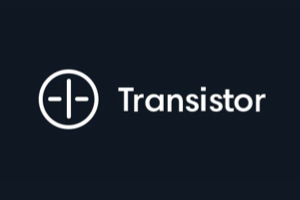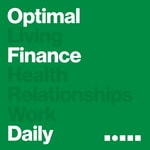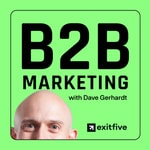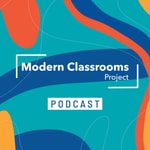B2B SaaS Marketing Snacks – Details, episodes & analysis
Podcast details
Technical and general information from the podcast's RSS feed.

B2B SaaS Marketing Snacks
Kalungi
Frequency: 1 episode/20d. Total Eps: 87

Recent rankings
Latest chart positions across Apple Podcasts and Spotify rankings.
Apple Podcasts
🇨🇦 Canada - marketing
19/06/2025#97🇨🇦 Canada - marketing
18/06/2025#41🇬🇧 Great Britain - marketing
12/06/2025#52🇨🇦 Canada - marketing
11/06/2025#65🇬🇧 Great Britain - marketing
11/06/2025#100🇨🇦 Canada - marketing
10/06/2025#36🇩🇪 Germany - marketing
06/06/2025#88🇨🇦 Canada - marketing
04/06/2025#64🇩🇪 Germany - marketing
27/05/2025#90🇩🇪 Germany - marketing
26/05/2025#43
Spotify
No recent rankings available
Shared links between episodes and podcasts
Links found in episode descriptions and other podcasts that share them.
See all- https://hubs.la/Q02lRt-m0
36 shares
- https://hubs.la/Q02lRv-k0
36 shares
RSS feed quality and score
Technical evaluation of the podcast's RSS feed quality and structure.
See allScore global : 53%
Publication history
Monthly episode publishing history over the past years.
61- How investors spot high marketing growth potential
Episode 61
vendredi 30 août 2024 • Duration 51:43
As a SaaS investor, how do you predict how fast a company will grow?
You need to know if you're looking at a rocket – or a tugboat – in terms of potential speed and growth. What are its chances to expand fast in the market? Can it really take hold and nail a niche?
In Episode 61 of the B2B Marketing Snacks podcast, we talk through all the factors to look for in a company that show it is primed for exponential marketing growth.
This is relevant for:
• Investors doing due diligence on software company targets
• Leadership, employees or job applicants looking at their own company
Learn how to spot the hidden potential a company has from a marketing perspective. With this framework, you will know if you should invest your priceless time, effort and capital into a company. Or, if you should search somewhere else.
B2B SaaS Marketing Snacks is one of the most respected voices in the SaaS industry. It is hosted by two leading marketing and revenue growth experts for software:
- Stijn Hendrikse: Author of T2D3 CMO Masterclass & Book, Founder of Kalungi
- Brian Graf: CEO of Kalungi
B2B SaaS companies move through predictable stages of marketing focus, cost and size (as described in the popular T2D3 book). With people cost being a majority of the cost involved, every hire needs to be well worth the investment!
The best founders, CFOs and COOs in B2B SaaS rely on a balance of marketing leadership, strategy and execution to produce the customer and revenue growth they require. Staying flexible and nimble is a key marketing asset in a hard-charging B2B world.
Resources shared in this episode:
- Keep Your Friends Close, Your Investors Closer
- How to Create a B2B SaaS Pitch Deck that Wins Over Investors
- Eat your own dog food: strength-testing your SaaS product
- Finders fees for raising capital: How much should you pay your funding raisers?
- T2D3 CMO Masterclass
- Submit and vote on our podcast topics
ABOUT B2B SAAS MARKETING SNACKS
Since 2020, The B2B SaaS Marketing Snacks Podcast has offered software company founders, investors and leadership a fresh source of insights into building a complete and efficient engine for growth.
Meet our Marketing Snacks Podcast Hosts:
- Stijn Hendrikse: Author of T2D3 Masterclass & Book, Founder of Kalungi
As a serial entrepreneur and marketing leader, Stijn has contributed to the success of 20+ startups as a C-level executive, including Chief Revenue Officer of Acumatica, CEO of MightyCall, a SaaS contact center solution, and leading the initial global Go-to-Market for Atera, a B2B SaaS Unicorn. Before focusing on startups, Stijn led global SMB Marketing and B2B Product Marketing for Microsoft’s Office platform. - Brian Graf: CEO of Kalungi
As CEO of Kalungi, Brian provides high-level strategy, tactical execution, and business leadership expertise to drive long-term growth for B2B SaaS. Brian has successfully led clients in all aspects of marketing growth, from positioning and messaging to event support, product announcements, and channel-spend optimizations, generating qualified leads and brand awareness for clients while prioritizing ROI. Before Kalungi, Brian worked in television advertising, specializing in business intelligence and campaign optimization, and earned his MBA at the University of Washington's Foster School of Business with a focus in finance and marketing.
Visit Kalungi.com to learn more about growing your B2B SaaS company.
60- How to hire a SaaS marketing leader
Episode 60
mardi 20 août 2024 • Duration 43:07
As a SaaS founder, hiring the right marketing leader for your startup is one of your most important yet tricky tasks. The wrong choice means lost time, revenue and resources when you need speed, scale and skill.
How much experience is enough? Will they fit your culture? Are they going to get the growth results your investors demand, quickly enough?
In this episode of B2B Marketing Snacks, our experts cover all the factors to consider before you go about hiring a B2B SaaS CMO, including:
• Best qualities to look for in CMO candidates
• Levels of candidate experience that work best for early-stage SaaS
• Budgeting for the right marketing team
• Hiring in-house vs agency vs fractional
• How to assure correct culture fit
• How to set expectations with a new leader
• The impact of equity in hiring
• How to maximize a new CMO's impact on your growth
With this expert perspective, you'll find the right marketing leaders for the right seats that can really move your company forward fast.
B2B SaaS Marketing Snacks is one of the most respected voices in the SaaS industry. It is hosted by two leading marketing and revenue growth experts for software:
- Stijn Hendrikse: Author of T2D3 CMO Masterclass & Book, Founder of Kalungi
- Brian Graf: CEO of Kalungi
B2B SaaS companies move through predictable stages of marketing focus, cost and size (as described in the popular T2D3 book). With people cost being a majority of the cost involved, every hire needs to be well worth the investment!
The best founders, CFOs and COOs in B2B SaaS work at getting the best balance of marketing leadership, strategy and execution to produce the customer and revenue growth they require. Staying flexible and nimble is a key asset in a hard-charging B2B world.
Resources shared in this episode:
- Hiring great marketers in today’s outsourced labor market
- 10 CMO Interview Questions: Hiring A Chief Marketing Officer (CMO)
- BSMS 13: What to look for in your CMO (or marketing leader)
- How to Hire a Top Growth Hacker: Job Description + Screening Tips
- Template - Marketing ROI Forecast & Estimation
- T2D3 CMO Masterclass
- Submit and vote on our podcast topics
ABOUT B2B SAAS MARKETING SNACKS
Since 2020, The B2B SaaS Marketing Snacks Podcast has offered software company founders, investors and leadership a fresh source of insights into building a complete and efficient engine for growth.
Meet our Marketing Snacks Podcast Hosts:
- Stijn Hendrikse: Author of T2D3 Masterclass & Book, Founder of Kalungi
As a serial entrepreneur and marketing leader, Stijn has contributed to the success of 20+ startups as a C-level executive, including Chief Revenue Officer of Acumatica, CEO of MightyCall, a SaaS contact center solution, and leading the initial global Go-to-Market for Atera, a B2B SaaS Unicorn. Before focusing on startups, Stijn led global SMB Marketing and B2B Product Marketing for Microsoft’s Office platform. - Brian Graf: CEO of Kalungi
As CEO of Kalungi, Brian provides high-level strategy, tactical execution, and business leadership expertise to drive long-term growth for B2B SaaS. Brian has successfully led clients in all aspects of marketing growth, from positioning and messaging to event support, product announcements, and channel-spend optimizations, generating qualified leads and brand awareness for clients while prioritizing ROI. Before Kalungi, Brian worked in television advertising, specializing in business intelligence and campaign optimization, and earned his MBA at the University of Washington's Foster School of Business with a focus in finance and marketing.
Visit Kalungi.com to learn more about growing your B2B SaaS company.
51 - A simple problem solving framework
Episode 51
samedi 27 janvier 2024 • Duration 09:39
A simple 4-step approach to get your goals back on track:
- Define the problem. Write it down—be specific. Make sure everyone agrees on the problem. This step is incomplete until everyone interprets the problem in the same way.
- Uncover the ~real~ root cause. People often jump too quickly to conclusions and favor obvious explanations for symptoms. Most problems are nuanced with many contributing factors. Try to unpack all of the potential causes.
- Document all possible solutions. Once you’ve uncovered the root cause, go from theory to execution. List out all of the things you can do to move the needle.
- Build the plan and execute. Prioritize your to-do list and get after it.
____
Links shared in this episode:
- T2D3 CMO Masterclass: t2d3.pro/masterclass
- Submit and vote on our podcast topics: kalungi.com/podcast
50 - Software without the subscription?
Episode 50
mercredi 17 janvier 2024 • Duration 22:43
Jason Fried (37Signals) recently published an open challenge to the software subscription model—their stance is that customers should once again be able to buy and own software products. To pay for them once and own the source code.
We discuss both models' pros and cons and speculate why Jason and the 37Signals teams introduced this strategy and manifesto. Here are some of our key takeaways:
- In the last few years, many software companies were able to get away with neglecting the second “s” in SaaS (service). But given the state of the tech industry, that’s now sometimes a determinant factor in whether or not someone continues using a product. We talk more about this in episode 44.
- Whether you sell software in a subscription model or through one-time version purchases or pay-per-update, there will almost always be a need for product innovation and support—to help customers succeed with the product and to maintain compatibility with hardware and browser changes. That can be paid for in service subscription fees (hence, the term, SaaS), or in other ways: for example, you could buy and own a software product, but the tradeoff is that you may need to coordinate and pay for server space, technical expertise to maintain it, and you’re stuck with a single version. The software world has trended toward the first model the last 10 years, but now people are starting to challenge this concept. For many products that aren’t consistently improving (or, in some cases, becoming bloated or harder to use)—customers often wonder, “What am I paying a continuous subscription for?”
- Supporting a pay-once model is an interesting positioning and differentiation play—and could be one of the underlying components of 37Signals’ strategy. For customers who’ve ever felt burned by the traditional SaaS model, a product that supports a pay-once philosophy could help you stand out from the competition.
___
Links shared in this episode:
- 37Signals manifesto: once.com
- T2D3 CMO Masterclass: t2d3.pro/masterclass
- Submit and vote on our podcast topics: kalungi.com/podcast
49 - Google’s exposed search ranking system
Episode 49
mercredi 20 décembre 2023 • Duration 19:36
Google has always guarded its search ranking factors. But thanks to the recent antitrust suit between the DOJ and Google, we now get a glimpse into the inner workings of their ranking systems through previously confidential internal documents.
Here’s what we’ve confirmed about the process so far:
Whenever new content is published and indexed on the internet, Google’s goal is to (as fast as possible) understand how relevant it is for searchers using its engine.
Google uses three main factors of a document (or article) to do this:
- Body - What a document says about itself (i.e., what do the URL, meta title, meta description, and body text signal about the content—will this be relevant for any existing search terms?)
- Anchor - What the web says about the document (i.e., which other websites link to the document, do they also have authority in the same domain, what words are used in the hyperlink?)
- User interactions - How readers respond to a document (i.e., clicks on the website, time spent on the result, clicks beyond the result page, subsequent searches, etc.)
User interactions are the most critical ranking factor. If users show they're satisfied with the content delivered by a particular search query, Google further strengthens the relationship between the two. Here are some of the ways a user can signal satisfaction with the delivered content:
- The user stays on the page
- The user clicks through to other pages from the result content
- The user doesn’t leave the page and returns to Google to continue their search (Google sees this kind of behavior—a bounce—as an indicator that they didn't get what they came for).
The first few days after your content is indexed are critical. Google will ‘test’ your content with select audiences and search queries it thinks could match. It will continue to serve the content if user response signals are good. If user response is poor, it will deprioritize it or experiment with its delivery in alternate search queries.
Content that summarizes information won’t cut it anymore. There are tools for that now. Content that will win will take information and add specificity, insights, and real-world examples that can only be gained from experience.
____
Links shared in this episode:
- Eric Hoffer - philosopher and master of original thought
- Search Engine Land article - 7 must-see Google Search ranking documents in antitrust trial exhibits
- T2D3 CMO Masterclass: t2d3.pro/masterclass
- Submit and vote on our podcast topics: kalungi.com/podcast
48 - Presenting your 2024 plan to the board
Episode 48
mercredi 6 décembre 2023 • Duration 25:34
Our best practices for presenting your marketing plan to the board of directors as companies are in the thick of 2024 planning.
General guidelines:
First, there are general guidelines you should always keep in mind when presenting your plan to the board:
- Come prepared - Don’t present plans that aren’t pressure tested. If you ask for money, be ready to answer questions about the specifics—results, how you’ll get there, data behind your hypotheses.
- Lead with the red - You’re not expected to be perfect at your job, but you do need to show that you’re the perfect person for your job. There will always be things that don’t go according to plan—you need to differentiate between what's relevant and irrelevant. Leading with things that can be done better can give you credibility. Don’t hide things that aren't working right now.
- Come with solutions - Prioritize and propose solutions for the things that didn’t go well. There are many ways to add revenue to the bottom line without creating new leads or MQLs. Think about other levers you can pull to impact revenue—here are 50+ examples to consider.
- Adopt a GTM mindset - Approach these conversations with the perspective that you are a go-to-market leader, not just a marketing leader. Everything in your company is intertwined. Ensure you're aligned with (and supporting) your other GTM leaders—Sales, Product, Success, etc.—in their efforts. Don’t present a marketing plan; present a holistic go-to-market approach and demonstrate how marketing’s role fits into it.
Presenting your plan to the board.
Your goal at the board meeting is to get alignment between the board and the CEO on three core metrics:
- Overall growth target - Your company’s reasonable growth aspiration. Consider what’s happening in the overall market and category you play in. This number gives you a foundation to forecast what you need to generate from your funnel.
- Net-revenue retention (NRR) - What will your revenue look like after expansions, upsells, churn, and contractions? For context, 2–3% churn is best-in-class. Aim for NRR above 100%.
- Profitability - What's the balance between growth and the cost of that growth? For every dollar that you spend, what will get returned?
____
Links shared in this episode:
- The Ansoff Matrix exercise for aligning your team around your growth priorities
- 50+ growth lever examples for your go-to-market plan
- Jason Lemkin’s C10/C60/C90 framework
- T2D3 CMO Masterclass
- Suggest a topic for our podcast
____
About B2B SaaS Marketing Snacks
B2B SaaS Marketing Snacks (BSMS) is a podcast produced by Kalungi that simplifies complex marketing topics in small bites. Hosted by Mike Northfield, Kalungi’s Chief Evangelist, and Stijn Hendrikse, Kalungi’s co-founder.
Kalungi is a marketing agency that works with early-stage software startups. Kalungi is an instant-on marketing department that builds and deploys go-to markets for early-stage B2B SaaS companies using T2D3 methodologies. Clients get access to a strategic marketing leader that can be held accountable to results and is supported by a team of tactical marketing specialists.
47 - Critical product marketing capabilities every team needs
Episode 47
mercredi 29 novembre 2023 • Duration 25:19
Strong product marketing is crucial for early-stage software companies. But it’s also the most significant gap for many.
Whether it’s your first marketing hire or someone from your founding team, someone on your team should be able to connect their deep understanding of your product (features, capabilities, value delivery) with an overarching go-to-market plan.
Some of the core product marketing capabilities your team needs are:
- Positioning: Understand your market and the competition. Create a point of view & product narrative. What makes you unique, different, or better than the alternatives?
- Packaging & Pricing: Make difficult decisions about product packages and pricing that maximize revenue per user and support your go-to-market motion (product-led growth, marketing-led growth, or sales-led growth).
- Messaging: Clarify your point of view with compelling communication that acknowledges your best-fit customers, who they are, how they buy, and where they are in the buying process. Turn features and functionalities into capabilities, outcomes, and benefits.
- Promotion: Enable your sales force, create content that creates and captures demand, and decide which channels to invest in.
Links shared in this episode: t2d3.pro/masterclass
Submit and vote on questions for us to answer: https://www.kalungi.com/podcast
____
B2B SaaS Marketing Snacks (BSMS) is a podcast produced by Kalungi that simplifies complex marketing topics in small bites. BSMS is hosted by Mike Northfield, Kalungi’s Chief Evangelist, and Stijn Hendrikse, a co-founder of Kalungi.
Kalungi is a marketing agency that works with early-stage software startups. Kalungi is an instant marketing department that builds and deploys complete go-to-markets using T2D3 methodologies. Full-service clients get access to a strategic marketing leader (Associate CMO) and a team of tactical marketing specialists that can be held accountable to results.
46 - A simple framework for content creation
Episode 46
jeudi 19 octobre 2023 • Duration 14:42
The content playbook that worked in the 2010s doesn’t work anymore. Things like keyword search volume, word count, and post date/time don’t have the same impact they used to. Instead of working backward from keyword to content, good content marketing does the reverse—start with a question you think you can answer better than someone else.
Don’t worry about the keywords for now.
There are two steps to nailing good content in 2023:
- Understand the problem. Who are you talking to? What are the questions they’re asking? Articulate the problem in terms your audience will connect with.
- Look at existing content on the topic and ask yourself: “Can I add real value to these results?” Be critical: will your point of view make a meaningful contribution? If you can solve a problem better than others—you can probably say something about it.
Google is overflowing with content by folks who chose a keyword to rank for, then wrote content that tries to rank for it without expertise on the topic. As a result, so much B2B content is generic, basic, and long-winded.
Strong content strategy starts with a common problem or question and expert-level content. SEO considerations should only come after you’ve created content worth being consumed.
Here are four criteria that should be fulfilled before you create new content:
- There is a collection of people who share a problem
- You understand and can articulate that problem
- You can expertly solve their problem (or answer their question) better than others
- People can find your answer
Some things will make your content perform better (proper markup, strong UX, good core web vitals, backlinks, interlinking, etc.), but if you don’t start with a foundation of valuable material—it won’t get you far.
Links shared in this episode:
- Free content marketing hub from Kalungi: https://www.kalungi.com/content-playbook
- Executive SaaS marketing frameworks by Stijn and Mike: https://www.t2d3.pro/
- Instant marketing team for early-stage software startups: https://www.kalungi.com/services/full-service-b2b-saas-marketing-team
Submit and vote on questions for us to answer: https://www.kalungi.com/podcast
____
B2B SaaS Marketing Snacks (BSMS) is a podcast that simplifies complex marketing topics in small bites, produced by Kalungi. Hosted by Mike Northfield, Kalungi’s Chief Evangelist, and Stijn Hendrikse, Kalungi’s co-founder.
Kalungi is a marketing agency that works with early-stage software startups. Kalungi acts as an instant marketing department that will build and deploy a company's complete go-to-market using T2D3 methodologies. Full-service clients get access to a strategic marketing leader and a team of tactical marketing specialists who can be held accountable for results.
45 - How to diagnose product-market fit
Episode 45
vendredi 15 septembre 2023 • Duration 20:22
The true definition of product-market fit is highly contested online. But one thing is clear from our experience: most founders think they’ve hit PMF far before they truly have.
What does product-market fit (PMF) actually mean; and how should your go-to-market techniques change once you get to PMF?
Product-market fit means finding a defensible beachhead of customers (a cluster of similar customers) who pay, stay, and refer others like them.
In this episode, Stijn shares a simple list of 10 milestones we use to measure a company's journeys toward product-market fit. As with everything we share, it’s just a model for reference—not gospel.
Resources:
- See how we assemble and launch complete marketing functions at Kalungi.com
- Self-paced education, certification, templates & guides for your go-to-market at t2d3.pro
- Schedule a free GTM audit & diagnosis with one of our Associate CMOs
Suggest and vote on podcast topics at kalungi.com/podcast
44 - The party is over
Episode 44
jeudi 7 septembre 2023 • Duration 25:29
2022 and 2023 brought new pressure to the software industry that many mature industries have felt for a long time. Here’s our take on what happened and where we go from here.
What happened?
- 2010–2021 were the years of plenty, with an extra push in the back from COVID
- Since growth capital was so cheap, it was easy to get away with mediocre performance
- The bar of performance was not high enough
- Growth was seen as a metric of success, not profit
Where do we go?
- Add discipline to how you run, just do the basics really well
- Deliver at a higher standard of execution
- When you apply success metrics and business expectations of other industries to many companies in the software industry, software performance is poor
- People got more excited about growth than things like CAC, and getting the most out of the customers and funnel they already had
- Do your research. Find out where your competitors are lacking quality and invest your efforts in that.
Want to know more about Kalungi or have a chat with our team about your company? Go to kalungi.com and book a free 30-minute meeting.
Want to learn about the T2D3 method? Get the book and certification at t2d3.pro
Tell us what you think or suggest a topic for the next episode here!








